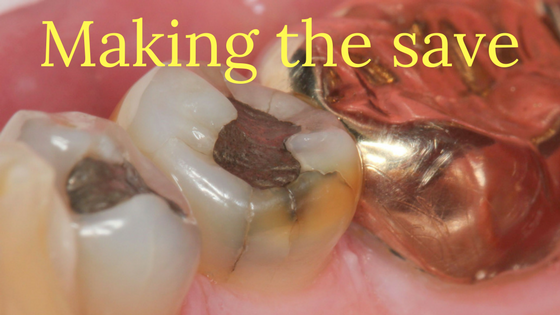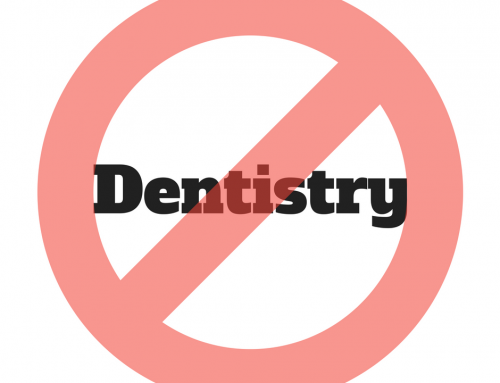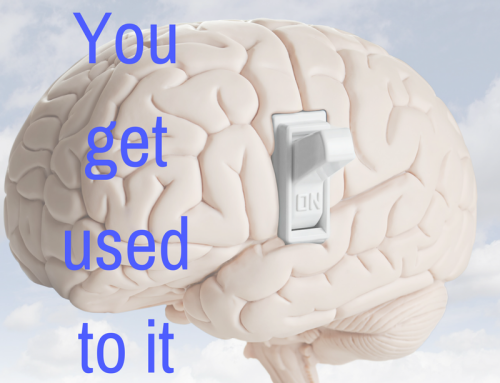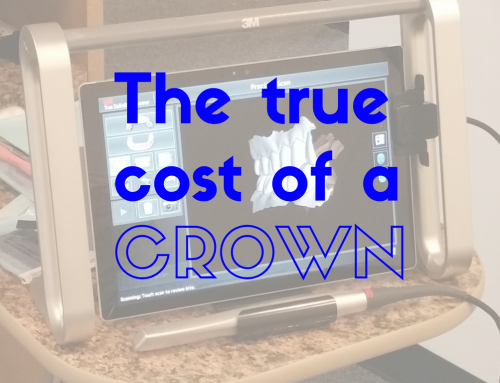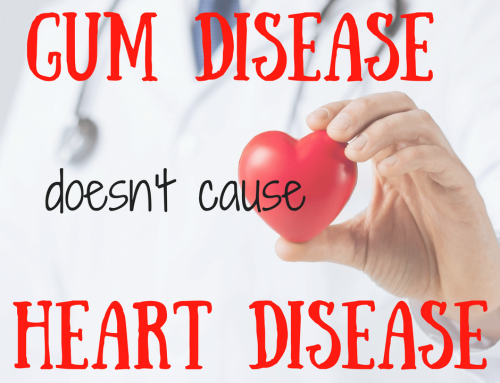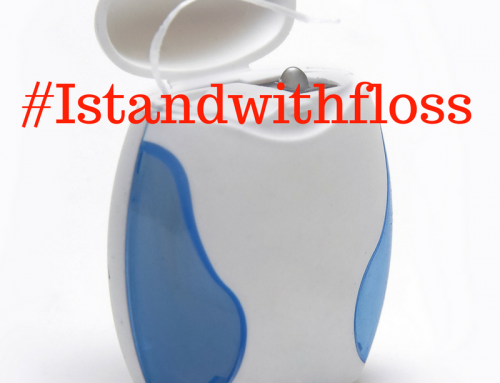Last week I found myself in a spot that I don’t like to be in. A couple of times. I found myself preparing a crown on a tooth that was in much worse shape than I would like. One case was a new patient that I had just started treating. The other patient was one that had waited on treating the tooth until it broke. We had diagnosed an “incomplete fracture” on the tooth some months (years?) before and recommended a crown, but for whatever reason the patient had decided to wait. As I’ve discussed in the past, most dental problems don’t hurt until they’re a big problem.
Crowns or onlays are “indirect restorations.” Which means they are made indirectly from the tooth, by a lab. Direct restorations are made righ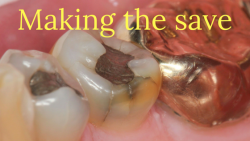 t on the tooth…most people would call these “fillings.” By the time a tooth is in need of an indirect restoration there has probably been a lot of tooth structure lost. Most of these teeth have been worked on before, often having had direct restorations placed. How do we know when a tooth is ready for an indirect restoration? There are a few signs I look for:
t on the tooth…most people would call these “fillings.” By the time a tooth is in need of an indirect restoration there has probably been a lot of tooth structure lost. Most of these teeth have been worked on before, often having had direct restorations placed. How do we know when a tooth is ready for an indirect restoration? There are a few signs I look for:
- cracks: the way teeth are designed is interesting. The outer enamel layer is very brittle and it’s stuck to a deeper dentin layer that is slightly softer which surrounds the pulp (nerve, blood vessel and connective tissue) which is soft and gooey. This is some amazing structural design, but as you age and your teeth are filled, heated, cooled and used for biting…they can develop cracks. Sometimes the cracks are superficial, sometimes they are deep. The good news is that at Mead Family Dental we’re pretty good at finding them. The microscopes that we use throughout the whole office are great at helping us see fractures in teeth…often before they become a big problem.
- wear spots: as you age, you wear your teeth. Some people wear their teeth significantly more than others. Just like tires, once you’ve worn your teeth down, they don’t fix themselves!
- existing restorations that are failing: What do you mean my filling broke? It’s only been in there for 15 years! I wish every restoration I placed would last forever, but that’s not how it works. Ask yourself this question: has it ever seemed like you just bought a new set of tires and then you see that you actually got them 50,000 miles ago? Yeah…restorations in teeth seem kind of like that, too.
- decay under an existing restoration: Your mouth is full of bacteria and your teeth are covered in biofilm…even if you’re a terrific brusher! Those bacteria are tiny and all it takes is a small leak in a filling or crown for them to sneak underneath and start multiplying. It happens to the best of fillings and crowns. Luckily, we can usually fix that decay so long as we are able to catch it early.
Your adult teeth have been functioning in your mouth since you were about 6 years old. They’ve been through a lot. Accidentally biting an olive pit, millions of hot—>cold and cold—>hot thermocyles (have you ever eaten ice cream while drinking coffee?) and hundreds of thousands of acid attacks. Frankly, teeth hold up amazingly well considering what we put them through. There’s no shame in having to reinforce what you were born with. In fact, I would suggest that it’s best to do this as soon as any of those signs start showing up.
Here’s the thing…the longer we let the problem go, the more difficult it is to fix. Ask any dentist and they’ll tell you. It’s much easier to save a tooth before it’s broken than after. Small cavities are much easier to deal with than big cavities. I’d much rather do an onlay on a tooth now than wait until it needs a root canal. I realize this sounds incredibly self serving for the guy who gets paid to fix your teeth to tell you that you should jump on things earlier than later. But remember, I’m a giant wuss when it comes to delivering bad news. I’d much rather place a really well fitting crown on a tooth with a healthy nerve and gums and solid bone to support it. The longer we wait on cracks, decay and failing restorations the worse the outcome is likely to be. No dentist wants to “make the save.” Teeth that have these problems are more difficult to clean up, more difficult to impression and more difficult for the lab to make an ideal restoration.
So, the moral of the story is…don’t wait! Often times I can make the save. But I’d much rather not have to!
Did this make you feel safe? Did it make you want to only eat soft and lukewarm things? I’d love to hear about it! You can share any Mead Family Dental post with a “Like” on Facebook, a “+1″ on Google+ or you can even “Tweet” it with Twitter! All you need to do is hover over the heart shaped button next to the title of the post. Or you can leave a comment by clicking on the balloon shaped icon next to the title.
If you’re looking for a dentist in Saginaw, we’re always happy to accept new patients! You can request an appointment online or call the office at (989) 799-9133. And, as always, you can email me at alan@meadfamilydental.com. I always answer my own emails!

